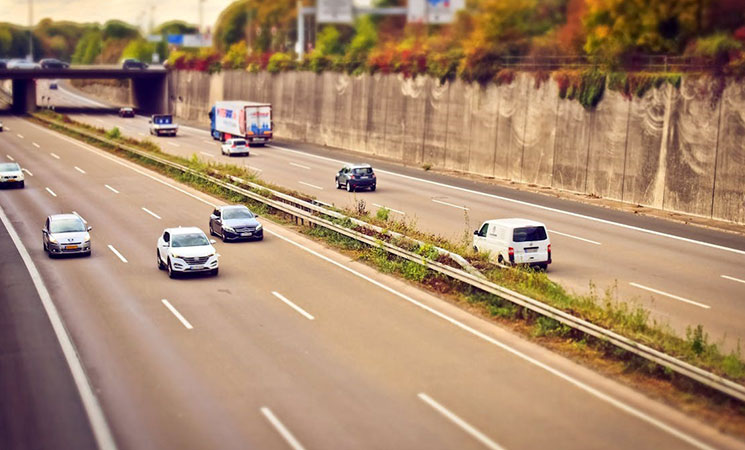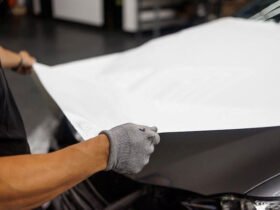Car breakdowns are unpredictable and can be quite stressful, especially on an interstate highway. Knowing what to do in such situations can significantly enhance your safety and ensure a quick resolution. Being prepared with the right knowledge can turn a potentially dangerous situation into a manageable one. Here are the top ten steps you should follow if your car breaks down on an interstate highway.
1. Pull Over Safely
The first and most critical step when your car breaks down is to pull over safely. Move your vehicle to the shoulder of the road or as far off the roadway as possible. Use your turn signals to indicate your intentions to other drivers. If possible, aim for a flat, straight stretch of road with plenty of visibility. Avoid stopping on curves or near hills where other drivers may not see you in time. Positioning your car safely reduces the risk of further accidents and ensures that you and your passengers are out of immediate danger.
2. Call Local Roadside Assistance
Once you are safely off the road, the next step is to call for professional help. Having a reliable roadside assistance service is crucial. But when you’re on an interstate and far from home, calling your trusty mechanic is not possible. That’s why it’s important to look for local help. If you’re in Maryland, for example, you can contact roadside assistance Maryland to get the help you need. When you call, provide them with your exact location and a brief description of the issue. This ensures that they can send the appropriate help quickly. Professional roadside assistance can provide services such as towing, battery replacement, tire changes, and more, ensuring that you get back on the road as soon as possible.
3. Turn on Hazard Lights
Immediately after pulling over, turn on your hazard lights. Hazard lights are essential for alerting other drivers to your presence and the fact that your vehicle is not moving. This is especially important in low-light conditions or during bad weather when visibility is reduced. Keeping your hazard lights on helps prevent further accidents by making your vehicle more visible to passing traffic. This simple step can significantly enhance your safety while you wait for assistance.
4. Stay Inside Your Vehicle
Staying inside your vehicle is generally the safest option while you wait for help to arrive. Exiting your vehicle on a busy interstate can be extremely dangerous due to the high speed of passing traffic. Keep your seatbelt fastened and lock the doors for added safety. There are exceptions to this rule, such as if you feel your car is in an unsafe position or if you notice smoke or fire. In these cases, carefully exit the vehicle and move to a safe location away from traffic but remain visible to responders.
5. Use Road Flares or Reflective Triangles
If you have them, use road flares or reflective triangles to increase your visibility to other drivers. Place them behind your vehicle at regular intervals to give oncoming traffic plenty of warning. These tools are especially useful at night or in low-visibility conditions. Setting them up safely can prevent other drivers from colliding with your vehicle, adding an extra layer of protection while you wait for help. Always keep these emergency tools in your car’s safety kit.
6. Communicate Your Location
When your car breaks down on an interstate, knowing your exact location is crucial for getting help quickly. Use mile markers, exit numbers, or GPS coordinates to pinpoint your location accurately. This information is vital when you contact roadside assistance or emergency services. If you’re unsure of your location, use your smartphone’s map app to find your coordinates or look for landmarks that can help identify where you are. Clear communication about your location helps ensure that assistance arrives promptly, minimizing your time stranded on the roadside.
7. Keep Emergency Supplies
Keeping emergency supplies in your car is essential for handling breakdowns safely and comfortably. Your emergency kit should include a first aid kit, bottled water, blankets, and a flashlight with extra batteries. Moreover, a fully charged phone and a car charger are quite useful for communication. Non-perishable snacks are also great if you’re stuck for an extended period. Reflective vests can increase your visibility if you need to exit the vehicle. Having these supplies on hand ensures you’re prepared for various scenarios and can help you stay safe and comfortable until help arrives.
8. Be Aware of Your Surroundings
Staying aware of your surroundings is crucial for your safety during a breakdown. Watch for oncoming traffic and be cautious of other drivers who may not see you. If you feel unsafe, trust your instincts and move to a safer location, such as behind a guardrail or further off the road, but remain visible to emergency responders. Stay vigilant for any unusual activity and avoid accepting help from strangers unless you feel it is necessary and safe. Being aware and cautious helps you stay safe and reduces the risk of accidents or unwanted encounters.
9. Know When to Move to Safety
While staying inside your vehicle is generally recommended, there are situations where it might be safer to move to another location. If your car is in a precarious position, such as on a blind curve or too close to traffic, consider exiting the vehicle carefully. Move to a safer location, like behind a barrier or further away from the road, but stay visible. Communicate your new location to the roadside assistance or emergency services when you call them. Knowing when to move to safety can prevent further danger and ensure you remain protected while waiting for help.
10. Plan for the Future
Planning for future breakdowns can make a significant difference in how well you handle them. Regular vehicle maintenance is essential to prevent breakdowns. Keep up with routine checks, such as oil changes, tire rotations, and brake inspections, to ensure your car is in good working condition. Consider joining a roadside assistance program, which provides peace of mind and immediate help when you need it. Familiarize yourself with your car’s basic functions and emergency procedures so you can handle minor issues on your own. Being proactive and prepared ensures you’re ready for any situation that arises.
Conclusion
Dealing with a car breakdown on an interstate highway can be a stressful and potentially dangerous experience. However, knowing the right steps to take can greatly improve your safety and the outcome of the situation. By calling for help, using road flares, communicating your location accurately, keeping emergency supplies, being aware of your surroundings, and staying calm, you can handle breakdowns more effectively.
Implementing these practices not only protects you and your passengers but also ensures that you are better prepared for any roadside emergency. Regularly reviewing these tips and maintaining your vehicle can minimize the risk of breakdowns and help you stay calm and in control if they do occur. By following these guidelines, you can ensure a safer and more manageable experience during car breakdowns on interstate highways, ultimately safeguarding your well-being and that of others on the road.













